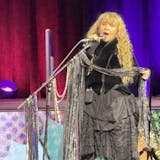Nineteen-year-old Stephanie Unger sat hunched over a table in the Walker Art Center basement, eagerly collaging flowers into a sky. It was Sunday morning, and she and her mom, Anna, had arrived in Minneapolis the night before from Jordan aboard the Queen of the Mississippi riverboat.
In between collaging, she rocked back and forth — but she wasn't in a rocking chair. With a giant smile on her face, Unger was exhibiting a type of self-stimulating behavior of a kid on the autism spectrum.
Unger was enjoying the Walker's monthly Sensory Friendly Sunday, launched in May for kids with autism. The idea came to Julia Anderson, the Walker's family and access programs coordinator, when she told a friend whose child is on the spectrum that they should come to the Walker's family day.
"She looked at me like: 'We can't come to Free First Saturday, that would be so overwhelming for him.' "
Anderson is one of many managers at Twin Cities cultural institutions who have realized the need for a sensory-friendly day or event. According to University of Minnesota data released in April, 2.4 percent of 8-year-olds in Hennepin and Ramsey counties were identified with autism spectrum disorder. Boys were 4.6 times more likely than girls.
The Minnesota Orchestra, which has offered sensory-friendly music events since 2013, will perform its first-ever full orchestra concert for people on the spectrum July 14. Children's Theatre Company and Stages Theatre both offer sensory-friendly presentations. And the Minneapolis Institute of Art has developed programming for visitors with autism.
The Walker's next event is July 8, funded by a $37,000 Minnesota State Arts Board grant. Although the grant runs out in October, Anderson plans to keep the program going.
"It is more about moderating the environment — making sure front-line staff and volunteers are trained, familiar with autism, and have this ethos of welcoming and access," said Anderson.


